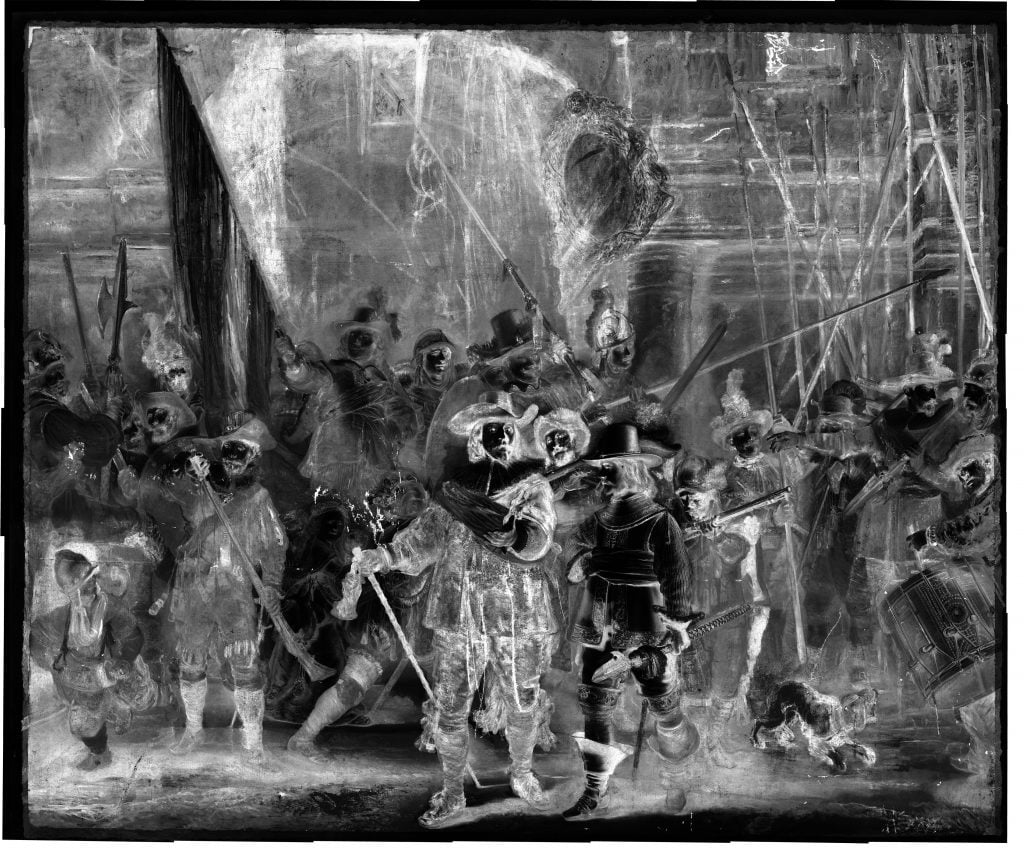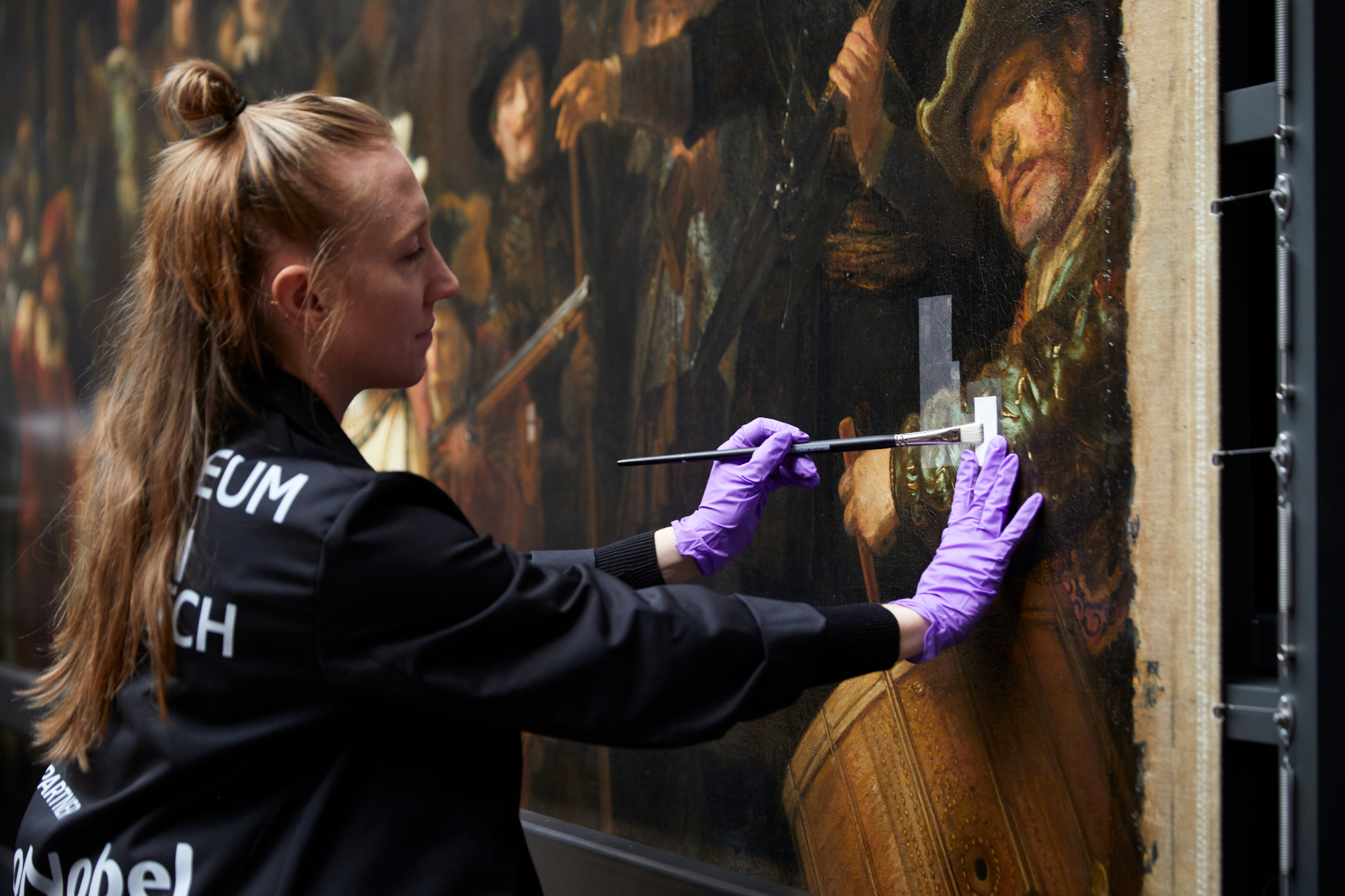After five years of intensive scientific analysis, The Night Watch by Rembrandt Harmenszoon van Rijn is finally ready to undergo a landmark restoration. The multi-year Operation Night Watch project has received global attention for its cutting-edge insights into one of the Dutch Old Master’s most beloved paintings.
Painted in 1642, The Night Watch at the Rijksmuseum in Amsterdam is one of the standout masterpieces of the Dutch Golden Age. Though it is technically a group portrait commissioned by a civic militia, it has become renowned for its engaging sense of drama. In 1715, it was installed in the Amsterdam Town Hall but, in order to fit it through the doors, an outer section of the canvas was trimmed off. It has been the crown jewel of the Rijksmuseum since 1885.
Entering into the second phase of the mammoth restoration project, the museum conservators have begun today to remove the varnish on the painting. This is being done while the work is still on public display, and the process involves absorbing the varnish by rubbing the canvas with a special microfiber cloth soaked in solvent. Any remains will then be removed using a cotton swab under a microscope.
The process of reconstruction of the trimmed edges of Rembrandt’s The Night Watch. Photo: Rijksmuseum/Reinier Gerritsen.
Since Operation Night Watch began in 2019, the Rijksmuseum’s team of world-class science researchers has been busy uncovering all there is to know about the vast 17th-century painting. To do this, they deployed a whole host of highly advanced techniques, including digital imaging and artificial intelligence.
In 2021, they used A.I. to “reconstruct” the areas where the painting had been trimmed in 1715, using as their starting point a surviving copy of the painting made by Gerrit Lundens before it was cut down to size. The team trained an algorithm to convert Lundens style into Rembrandt’s, and then used his copy to show the computer the underlying composition. The reconstructed images were then printed onto panels and temporarily installed around the surviving section of The Night Watch, so that visitors could see the complete composition for the first time in over 300 years.
Some fun surprises to be uncovered over the past five years, include a mysterious trace of egg yolk and the use of arsenic to achieve a lustrous sheen.

The Calcium map of Rembrandt’s The Night Watch. Photo courtesy The Rijksmuseum.
Further analysis of the painting revealed previously unknown preparatory sketches hidden beneath the paint layers, which can be seen in a “calcium map” released by the Rijksmuseum. An x-ray analysis also revealed that Rembrandt worked on a base layer of lead, important knowledge ahead of the more invasive conservation work.
The Night Watch is centuries old, but it has not made it this long without facing many serious threats to its continued existence. In 1911, one assailant attempted to slash it with a knife, and in 1975 it was successfully sliced in several places by a teacher who was apparently angry that he had been refused entry to the Rijksmuseum the evening before. In 1990, a German man doused the painting in acid, which thankfully only corroded the varnish layer before it was removed.



